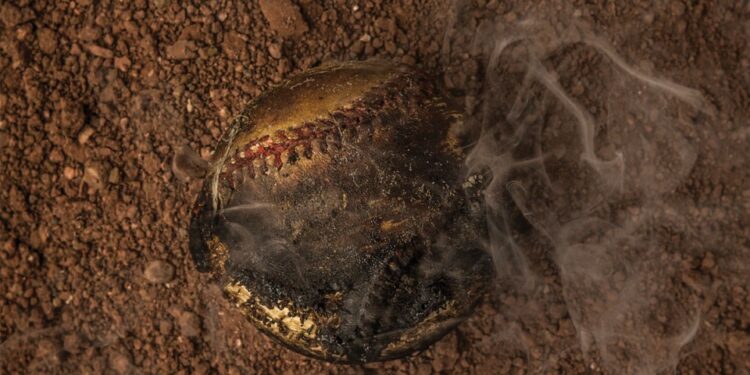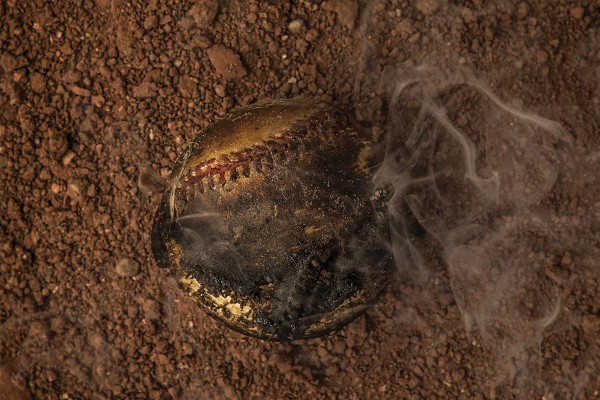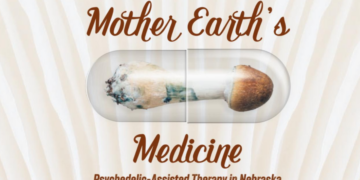This article originally published in May/June 2015 edition of The Encounter.
Steve Rosenblatt likes to drive by the 15th and Vinton streets area and visualize the neighborhood as it was a century ago. A ballpark sat there before burning down in 1936.
The long-gone field is where Omaha baseball history took place. Where Babe “The Bambino” Ruth hit a home run. Where Western League ballplayers fiercely competed.
And where 19-year-old Johnny Rosenblatt (who became Steve’s father) started a 20-year career as an outfielder in amateur and semipro leagues. He went on to play professionally in 1934 and 1935 with the Omaha Packers in the Western League.
As a semipro, Johnny Rosenblatt sometimes played under the name Johnny Ross. He became mayor of Omaha and the inspiration for the now-demolished Rosenblatt Stadium.
Later his son would follow in Johnny’s baseball cleats. Steve played baseball for the Jewish Community Center team made up of players from the Creighton University baseball team.
“They wanted someone who was Jewish, and I was the best-known Jewish player in 1957,” he says.
The field on Vinton Street was a center of excitement in 1927 when Babe Ruth and Lou Gehrig came to town for an exhibition game that drew thousands of fans. Their team, the New York Yankees, were on a roll: They had just won the World Series. Gehrig was selected MVP in the American League. Ruth had hit a record 60 home runs that year.
Steve Hayes, chairman of Omaha Print, has the box scores from that 1927 game along with historical memorabilia from the Omaha Prints, the company’s team that played in the game.
On that unforgettable day in 1927, Lou Gehrig played for the Omaha Prints, competing with Babe Ruth, who played for the Brown Parks. Brown won 9-5.
But a week later, the Omaha Prints were back on top at Vinton Street Park—then called Western League Park—winning the city championship against the Brown Parks 2-1.
Hayes says that Rosenblatt played for the company’s team that day and others. “He also played basketball and bowled for us.”
The park near 15th and Vinton streets had many names. The website nebaseballhistory.com explains: “The name of the park depended on the whim of the newspaper. Usually it was referred to as the Vinton Street Park. Sometimes it was called Rourke Park and later in the 1920s, League Park became the most common moniker.”
Timeline
The following includes historical information compiled by Kevin McNabb when he was the media relations director for the Omaha Royals. McNabb is now a radio sports director in Columbus, Neb.
1900—The Omahogs team, in Omaha since 1887, started playing in a new baseball park at 15th and Vinton streets. Admission was 25 cents.
1901—The team was renamed the Omaha Indians and the Western League was established.
1902—The park’s name changed to Rourke Park Western League.
1904—The Rangers, who played under that name for one season, took the Western League pennant.
1905to 1920—The team is now called the Rourkes, presumably named for manager Billy “Pa” Rourke.
1908—Rourke poured $32,000rinto rebuilding Vinton Street Park.rA new grandstand held 8,500 fans.
1921—A contest to rename the team resulted in “Buffaloes” for the next six years. The Buffaloes drew 123,000 fans their first season.
1930—Lights were put up at Vinton Street Park, and the first night game was played with the Omaha Packers vs. the Denver Bears.
1936—A new team is called the Robin Hoods.
1936—In August, a three-alarm fire shortly after midnight destroyed Western League/Vinton Street Park and 12 nearby homes. Destroyed were uniforms, bats, balls, and $1,000 worth of beer and hot dogs.












